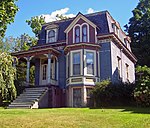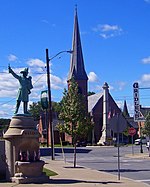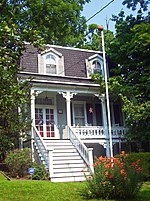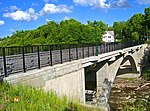Walden–Wallkill Rail Trail

The Walden–Wallkill Rail Trail, also known as the Jesse McHugh Rail Trail, is a 3.22-mile (5.18 km) rail trail between the village of Walden, New York and the neighboring hamlet of Wallkill. The two communities are located in Orange and Ulster counties, respectively, in upstate New York. The trail, like the Wallkill Valley Rail Trail to the north, is part of the former Wallkill Valley Railroad's rail corridor. The land was purchased by the towns of Montgomery and Shawangunk in 1985 and converted to a public trail. The portion of the trail in Shawangunk was formally opened in 1993 and named after former town supervisor Jesse McHugh. Plans to pave the trail between Walden and Wallkill were discussed since 2001, and the route was finally paved between 2008 and 2009. The trail includes an unofficial, unimproved section to the north of Wallkill, and is bounded by NY 52 and NY 208.
Excerpt from the Wikipedia article Walden–Wallkill Rail Trail (License: CC BY-SA 3.0, Authors, Images).Walden–Wallkill Rail Trail
Lake Osiris Road,
Geographical coordinates (GPS) Address Nearby Places Show on map
Geographical coordinates (GPS)
| Latitude | Longitude |
|---|---|
| N 41.57434 ° | E -74.1811 ° |
Address
Lake Osiris Road 39
12586
New York, United States
Open on Google Maps










